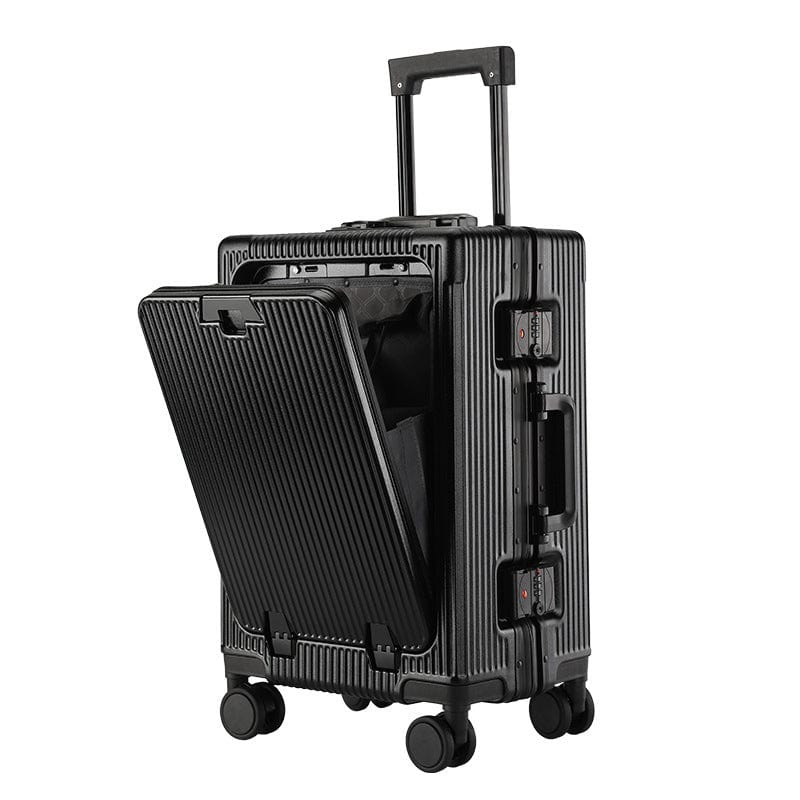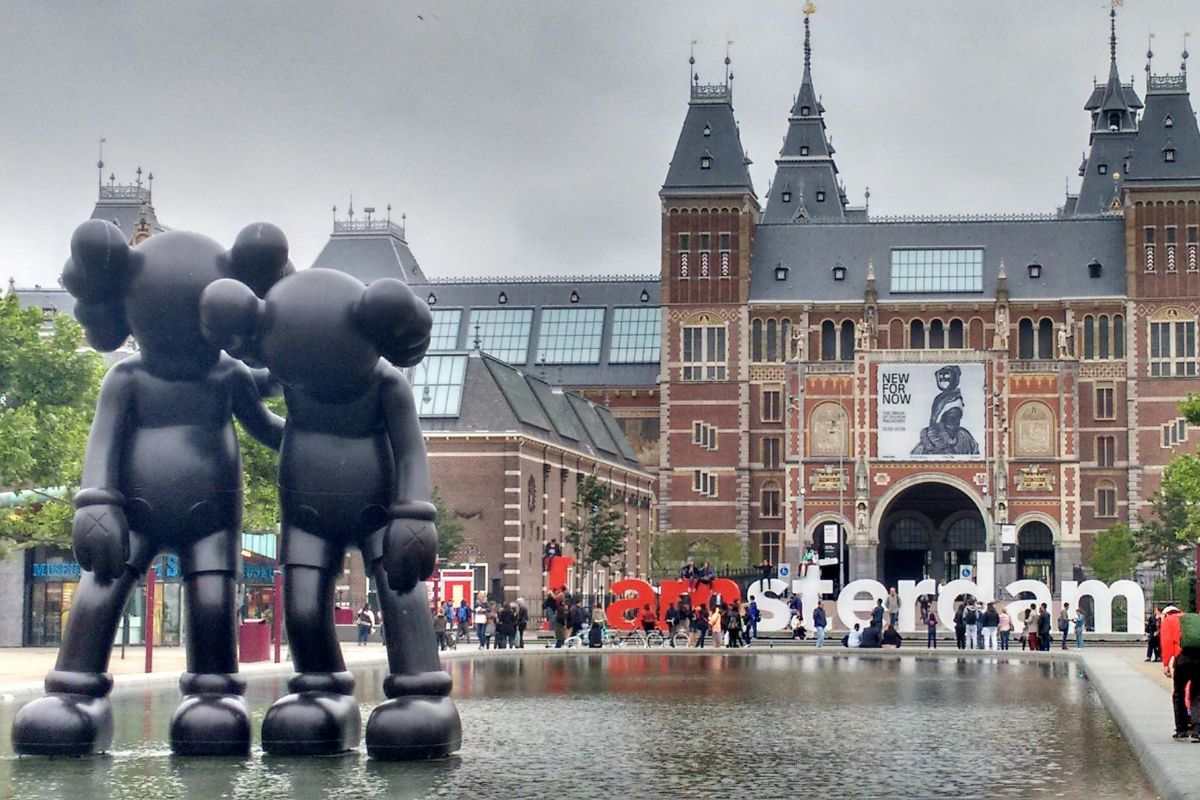Amsterdam is a city that effortlessly blends its rich history with a vibrant modern culture. Known for its iconic canals, charming gabled houses, and world-class museums, it’s a place where every corner tells a story. Spending 48 hours here might seem short, but it’s just enough to soak in the essence of this enchanting destination.
In just 48 hours, you’ll discover why Amsterdam captures the hearts of travelers worldwide. It’s a city that feels both timeless and refreshingly alive, no matter how brief your visit.
Streets, Canals, And Soul: The Heart of Amsterdam
Strolling along Amsterdam's cobbled streets and crossing its arched bridges reveals the city's unique charm. The winding canal network, designated as a UNESCO World Heritage site, offers more than 60 miles of waterways. These canals are lined with thousands of 17th-century narrow houses, each adorned with gabled facades that tell stories of a bygone era. Whether walking or cycling, these streets create an immersive experience that feels like stepping into a living museum.
I recommend exploring The Nine Streets (De Negen Straatjes), a quaint neighborhood filled with boutique shops, cozy cafés, and vintage stores. This area perfectly blends Amsterdam's old-world allure with its modern cultural vibe. For a quieter experience, wander through the Western Islands, where peaceful canals and fewer tourists allow a serene connection to the city's soul.
Taking a canal cruise provides a different perspective of Amsterdam. Gliding through the waterways at sunset showcases the city under a warm glow, with reflections of twinkling lights on the water. Options range from open boats for an intimate atmosphere to larger vessels offering guided experiences. These cruises highlight iconic landmarks, such as Anne Frank House and the Westerkerk, making it both a scenic and historical journey.
Each corner of Amsterdam's streets and canals holds an undeniable sense of character. Whether by foot, bike, or boat, exploring these picturesque spots reveals why this city captures the hearts of millions.

Walking Through the Golden Age
Amsterdam's 17th-century Golden Age shines brightest in its architecture and landmarks. I began my exploration at the Rijksmuseum, a treasure trove of masterpieces from this period. Works by Rembrandt, Vermeer, and other Dutch masters reveal the artistic brilliance of the era. The nearby canal ring, a result of meticulous planning during the Golden Age, showcases the city's wealth and innovation. These UNESCO-recognized canals remain some of the most picturesque and historically significant parts of Amsterdam.
Continuing my walk, I visited the Anne Frank House, a poignant reminder of the city's layered history beyond its Golden Age. Along the way, I passed striking gabled buildings, narrow yet intricately detailed, reflecting the opulence and craftsmanship of that time. In Jordaan, charming streets and hidden courtyards offered insight into how different social classes lived during the same prosperous century.
I ended this journey at the Royal Palace on Dam Square, originally constructed as the Town Hall during the height of the Golden Age. Its grandeur speaks to Amsterdam's position as a global trading powerhouse. Walking these historic areas provides an unmistakable connection to the city's fascinating past while sampling the vibrant energy of today.
The Ideal 40L Travel Backpack for a 48-Hour Amsterdam Adventure
Embarking on a 48-hour adventure in Amsterdam requires smart packing, and the Arca Official 40L Travel Backpack is your ideal companion. This versatile backpack starts at 30 liters and expands to 40 liters, offering ample space for your essentials. Its water-resistant materials and ergonomic design ensure comfort and durability as you explore the city's canals, museums, and vibrant neighborhoods. With a dedicated laptop compartment and easy-access pockets, your belongings stay organized and secure. Make the most of your Amsterdam getaway with a travel backpack designed for modern travelers.
Museums and Memorable Moments
Amsterdam's museums are a treasure trove of art, history, and culture. Starting with the Van Gogh Museum, this renowned institution offers the largest collection of Vincent van Gogh's works. The exhibits follow the artist's life, featuring iconic self-portraits, tranquil landscapes, and vivid still-life pieces. Booking tickets in advance ensures a seamless visit, especially during busy seasons.
The Rijksmuseum showcases masterpieces from the Dutch Golden Age. Works by Rembrandt, including "The Night Watch," and Vermeer's "The Milkmaid," offer an incredible glimpse into 17th-century artistry. The museum's garden adds an extra layer of charm to the experience.
For those seeking modern art, the Stedelijk Museum highlights contemporary creativity. Its rotating exhibits and permanent collection display renowned pieces by artists like Mondrian and Malevich. This makes it a must-visit for lovers of modern design.
At the Anne Frank House, history feels personal. Walking through the secret annex where Anne Frank hid during World War II, you can't help but reflect on the resilience and courage embedded in her story. Tickets sell quickly, so reserving them online is essential.
The Royal Palace Amsterdam on Dam Square offers insight into regal grandeur. Originally built in the 17th century as a town hall, this structure remains one of the city's architectural marvels. Exploring its ornately decorated rooms reveals a blend of history and monarchy.
Each museum provides a distinct perspective on Amsterdam's diverse heritage, offering moments that linger long after the visit ends.

Shopping with Character
Exploring Amsterdam's shopping scene reveals its distinctive charm. The Nine Streets (De Negen Straatjes) remain my favorite for boutique shopping. These interconnected streets between the canals host vintage stores, unique fashion brands, and specialty shops. I found everything from handcrafted jewelry to quirky stationery here.
For a market experience, I headed to Albert Cuyp Market in De Pijp. It's the largest outdoor market in the city, offering fresh produce, street food, and Dutch specialties like stroopwafels. Independent vendors also sell leather bags, accessories, and art.
At Haarlemmerstraat and Haarlemmerdijk, I loved visiting artisanal bakeries and design stores. Known for their creative atmosphere, these streets combine local craftsmanship with contemporary trends. I even found a shop dedicated to sustainable fashion that stood out for its thoughtful designs.
To indulge in high-end shopping, I walked over to P.C. Hooftstraat. This luxury street features designer boutiques from renowned global brands. Even window-shopping here felt luxurious, with its elegant storefronts and beautifully laid-out displays.
On my stroll through Jordaan, I encountered small shops filled with antique treasures and vintage finds. From mid-century furniture to rare books, this area whispered stories of the past, making every item feel uniquely special.
Amsterdam's shopping options provide much more than transactions—they create memorable experiences. Every district and street offers treasures that reflect the city's creative and multicultural identity. Each purchase felt like a piece of the city I could take home.
Tastes of Mokum
Amsterdam's culinary scene showcases its rich cultural history and modern influences. The city, affectionately called Mokum by locals, offers a variety of flavors that reflect its diverse heritage.
Indonesian Rijsttafel
Exploring Amsterdam isn’t complete without tasting “rijsttafel,” a Dutch-Indonesian tradition translating to “rice table.” Born from colonial ties, this meal presents a grand selection of small Indonesian dishes paired with rice. A typical rice table includes up to 20 items, from spicy beef rendang to sweet satay chicken and vegetarian options like tempeh. Sharing one with fellow travelers is an experience in itself.
Street Food at Albert Cuyp Market
Albert Cuyp Market is a must-visit for street food lovers. With around 260 stalls, this lively market serves authentic Dutch treats like fresh stroopwafels, fried kibbeling, and warm poffertjes. I grabbed a stroopwafel hot off the press, its gooey caramel center still warm, making it unforgettable. The market, open six days a week, is also perfect for picking up local cheeses or gifts.
Foodhallen’s Global Tastes
Located in a revamped tram depot, Foodhallen brings an international food court vibe to Oud-West. Its buzzing atmosphere complements food options like Iberian ham at Jabugo, sushi from Meneer Temaki, or a refreshing gin cocktail from its gin and tonic bar. After dining, I explored the adjoining arts center, which adds a cultural twist to this foodie haven.
Brown Cafés and Gezellig
The traditional Dutch brown cafés offer an authentic way to embrace gezellig, the Dutch version of cozy contentment. Café Hoppe near Spui, one of the oldest cafés in the city, serves robust beers in a cozy, warm-lit setting. Jordaan’s Café Chris, dating back to the 17th century, provided a snug atmosphere where locals unwind, embodying Amsterdam's relaxed lifestyle.
Pancakes and Tea Stops
No visit to Amsterdam is complete without Dutch pancakes. These thin delights, often served with powdered sugar or savory toppings like bacon, pair wonderfully with tea or hot chocolate. Many eateries in the center offer both modern and traditional options. Afterward, I stopped by Lot Sixty One for a cup of the city’s best espresso, fueling more exploring.
Local Culture and Vibes
Amsterdam's local culture reflects a blend of history and modernity, best experienced by wandering its neighborhoods. I noticed that locals embrace a laid-back yet dynamic lifestyle, often centered around cycling, community spaces, and the city's renowned gezellig (coziness). Exploring areas like Jordaan uncovers narrow streets filled with independent galleries, vintage shops, and traditional brown cafés where locals gather for a drink.
Language diversity stands out here; while Dutch is the native tongue, English dominates conversations in many places. Markets like Albert Cuyp Market offer vibrant glimpses of daily life, with vendors selling Dutch specialties and multicultural delights. I found the energy in these spaces to perfectly showcase Amsterdam's open and inclusive atmosphere.
Cultural traditions are vital to the city’s charm. Observing King's Day festivities, for instance, reveals how Amsterdammers celebrate their heritage with street parties, market stalls, and an unmistakable sea of orange. Seasonal events like the Amsterdam Light Festival bring together art and technology, lighting up the canals with innovative creations.
Canals play a significant role in shaping community life too. While strolling or cruising, I noticed locals relaxing by the water with snacks and drinks, a typical weekend pastime. Hidden parks and courtyards, like Begijnhof, offer serene escapes amidst the city’s bustle, revealing the quieter side of Amsterdam’s personality. These elements combined create a cultural richness that leaves a lasting impression.

Accommodation Recommendations
Finding the right place to stay in Amsterdam can enhance the 48-hour experience. The city offers diverse options to suit different preferences and budgets, ensuring comfort and accessibility.
- Boutique Hotels: For unique charm and elegant amenities, boutique hotels stand out. Locations like Hotel de Hallen in the west are perfect for trendy design lovers, especially with its proximity to the Foodhallen market. The Dylan offers a luxurious atmosphere nestled in the heart of the canal district, while The Hoxton combines style with a central location near key attractions.
- Budget-Friendly Stays: Affordable options allow for an economical yet pleasant stay. EasyHotel, for example, provides clean, functional rooms conveniently situated near major transport links. Staying near De Pijp or Central Station ensures quick access to top landmarks, saving valuable time during a short visit.
- Luxury Accommodations: Upscale choices like the Conservatorium Hotel deliver opulence with five-star service. These locations often feature historic architecture, spa facilities, and gourmet dining, making them ideal for travelers seeking an indulgent retreat.
- Houseboat Rentals: For a unique experience, staying on a houseboat immerses visitors in Amsterdam’s canal-centric lifestyle. These floating accommodations, though compact, provide a cozy ambiance and fantastic canal views.
Each neighborhood offers distinct advantages, from the bustling energy of De Pijp to serene canal-side settings. Selecting accommodations based on proximity to attractions or transportation helps maximize time spent exploring Amsterdam.
Dining and Drinking Spots
Amsterdam's culinary and drinking scene offers an unforgettable exploration of flavors and settings. I immersed myself in its variety, uncovering local and international delights.
Traditional Dutch Cafés
Dam Square provided the perfect base to sample traditional Dutch drinks. I stopped by Café de Drie Fleschjes, the city's oldest jenever tasting house, for a shot of this Dutch-style gin. For a cozy atmosphere, Hoppe and Karpershoek stood out with their historic charm and great options for beer lovers.
International Cuisine at Foodhallen
One evening, I explored Foodhallen, a vibrant indoor food market west of the center. The space buzzed with flavors from around the globe, from Spanish tapas to Vietnamese spring rolls. Whether craving sliders or vegetarian bites, the variety was impressive.
Canalside Dining
Dining along the canals added a special touch to my meals. I tried herring from street vendors paired with pickles, experiencing a true Dutch specialty. One dinner included grilled seafood at an elegant restaurant overlooking the water, blending stellar tastes with scenic views.
Neighborhood Highlights
De Pijp, known for its trendy vibe, offered a mix of casual eateries and upscale options. After browsing the Albert Cuyp Market, I indulged in freshly made stroopwafels. In Jordaan, quiet streets provided intimate cafés perfect for a laid-back brunch.
Drinks With Atmosphere
Local breweries added depth to my Amsterdam experience. A visit to a craft brewery in a converted windmill introduced unique beers with refreshing profiles. Later, I enjoyed cocktails at rooftop bars, soaking in the city’s skyline, which glimmered beautifully at night.
Activities and Attractions
Exploring Amsterdam in 48 hours means immersing yourself in a blend of history, culture, and modern charm. I prioritized visiting iconic landmarks to maximize my time in this vibrant city.
Iconic Museums
Amsterdam's Museum District stands out as a must-visit area. The Rijksmuseum showcases Dutch masterpieces, including works by Rembrandt, while the Van Gogh Museum offers the world's most extensive collection of the artist's works. For modern art enthusiasts, the Stedelijk Museum presents an impressive range of contemporary pieces. Booking tickets in advance often saves time at these popular sites.
Historical Spots
The Anne Frank House serves as a powerful reminder of history. Located near the Prinsengracht canal, this site features a permanent exhibition within the house where Anne Frank lived in hiding. The Royal Palace on Dam Square and the 17th-century canals also provide intriguing glimpses into Amsterdam's Golden Age.
Neighborhood Strolls
Jordaan, with its narrow streets and quirky boutiques, offers a quieter side of the city. I also wandered through De Negen Straatjes, bursting with unique shops and cozy cafés, perfect for a leisurely afternoon. The Western Islands provided a serene escape from the bustling city center.
Canal Cruises
Gliding through the water on a canal cruise is unforgettable. I opted for a sunset tour that highlighted the Anne Frank House, Amstel River, and illuminated bridges. This perspective revealed the city's architectural beauty and tranquility.
Cultural Experiences
Cycling defines Amsterdam's lifestyle, making it the ideal way to explore. Renting a bike allowed me to navigate through scenic streets and parks like Vondelpark. Seasonal events, such as King's Day festivities or the Amsterdam Light Festival, showcase the city's cultural vibrancy.
Unique Attractions
The Red Light Secrets Museum, located in the famed Red Light District, offers insight into the history of the Dutch sex work industry. For a taste of local horticultural passion, I visited a small museum near the Anne Frank House detailing the Dutch love for tulips, complete with a shop selling vibrant bulbs.
Damrak Waterfront and Dam Square
Walking along the Damrak Waterfront, I admired the gabled houses that reflect Amsterdam's historic architecture. Dam Square served as a central hub, with street performers and historic buildings creating a lively atmosphere.
This diverse mix of activities and attractions ensured every moment of my visit held something special. Combining history, culture, and leisure, Amsterdam truly captivated me within just two days.
Amsterdam Must-Haves
Experiencing Amsterdam fully within 48 hours means focusing on essentials that capture the city's essence. Here are the must-haves that enhanced my trip:
Comfortable Footwear
Navigating Amsterdam's cobblestone streets and numerous canals is easiest with comfortable shoes. I walked long distances through neighborhoods like Jordaan and De Negen Straatjes, making sturdy sneakers essential.
Bike Rentals
Cycling defines the Amsterdam experience. Renting a bike allowed me to explore the city efficiently, from the Museum District to hidden spots like the Western Islands. Dedicated bike paths made it safe and enjoyable.
Museum Pass or Tickets
Purchasing tickets in advance saved time at iconic sites like the Van Gogh Museum and Anne Frank House. A museum pass can be useful if planning multiple visits, as entry fees quickly add up.
Weather-Appropriate Clothing
Amsterdam's unpredictable weather calls for layers and a waterproof jacket. During my visit, sporadic rain showers were common, and an umbrella came in handy.
Canal Cruise Tickets
A canal cruise provided an unforgettable perspective of the city. Booking an evening tour highlighted landmarks like Westerkerk and illuminated bridges, adding to the charm.
Local Transit Card
The OV-chipkaart made traveling by tram, ferry, or metro convenient. This card saved time and avoided the hassle of buying single-use tickets for short trips across the city.
Portable Map or App
Having a detailed map or app helped me navigate Amsterdam's winding streets and locate attractions faster. Offline options were especially valuable in areas with limited internet access.
Reusable Water Bottle
Walking and cycling made staying hydrated essential. Many public fountains in the city offered free drinking water, and a reusable bottle reduced plastic waste during my trip.
Camera or Smartphone
I captured Amsterdam's picturesque canals, gabled houses, and vibrant markets. Minimalist equipment kept my hands free for cycling or strolling through bustling streets.
Evening Along the Amstel River
As my 48 hours in Amsterdam came to a close, I found myself drawn to the serene beauty of the Amstel River. Watching the city lights reflect on the water while locals cycled by reminded me of Amsterdam's unique charm—a perfect blend of history, culture, and modern vibrancy.
Whether it was the timeless architecture, the rich museum experiences, or the unforgettable culinary delights, every moment felt like a celebration of the city's essence. Amsterdam is more than a destination; it's an experience that stays with you long after you've left.













